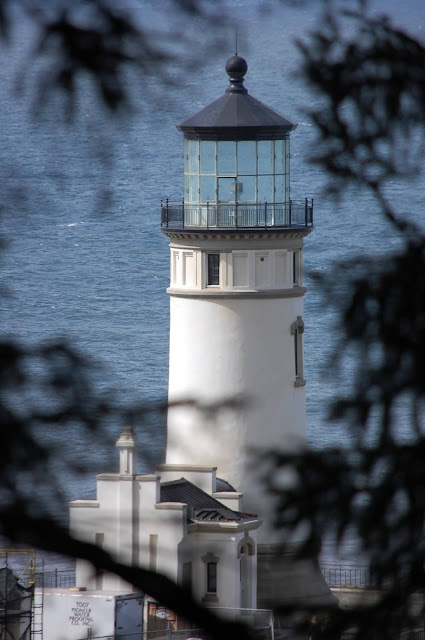
Cape Disappointment, on the southernmost point of the Washington coast, near the mouth of the Columbia River, is home to two light houses - North Head Lighthouse and Cape Disappointment Lighthouse. The meeting of the Columbia River with the Pacific Ocean creates conditions that can prove challenging for vessels crossing the Columbia Bar.
The Columbia Bar is the point at which the 4-7 knot Columbia River, the fourth largest US as measured by volume of water, runs headlong into the westerly currents and winds of the Pacific resulting in 40 foot wave and unpredictable currents. The conditions have resulted in 2000 wrecked ships over the decades.
The number of shipwrecks that have occurred along the rugged coast of the Pacific Northwest has rightly earned the title 'The Graveyard of the Pacific'. It runs from the coast of Vancouver Island in the north to halfway down the Oregon Coast. The weather conditions - Cape Disappointment averages 107 inches of rain and 100 days of fog annually- the currents and changing sand bars at the mouth of the Columbia make it an especially treacherous area.
The Columbia River is navigable to large ships even further upstream than Portland. As the economy of this region increased so did the number of ships of crossings of the Bar. Currently the shipping channel at the bar is about a half mile wide and is kept at 55 feet deep with regular dredging required. (Debris from the eruption of Mount St. Helens in 1980 reduced the depth of the channel to 14 feet in depth and temporarily halted maritime traffic in the river.)
The first documented crossing of the Columbia River bar by Europeans occurred in 1792. The end of the era of sails, the creation of a navigation channel, constructions of jetties and technology have significantly reduced the frequency at which vessels join previous victims. Navigation aids such as the North Head Light and other area lighthouses were key early attempts to make the area more safe. Currently more advanced navigational aids and other technology have made the area safer.
The North Head Light has been in continuous operation since 1898 and was automated in 1961. The nearby Cape Disappointment light was built in 1856, but wasn't as effective for ships coming from the north, so this second light was added. The North Head Light was designed by Carl Leick, the architect of 25 structures in the northwest, including several regional lighthouses.
The tower is 85 feet high and is perched on the edge of a rocky cliff 130 feet. The current light can be visible 30 miles out to sea.


No comments:
Post a Comment